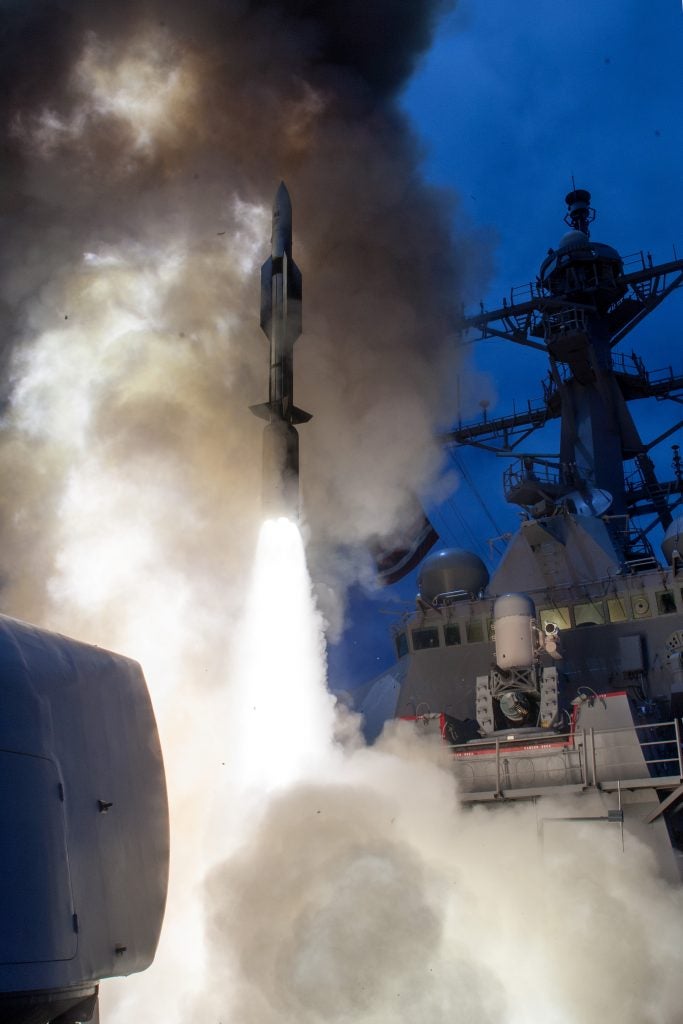United States Approves Possible Sale of SM-6 to Japan
The Department of State has approved a potential sale of Standard Missile 6 (SM-6) to the Government of Japan. While the contents of the deal have not been fully finalized, the Japanese government has requested to purchase 32 Standard Missile 6 (SM-6) Block I missiles and related equipment for an estimated cost of $450 million.
According to the Defense Security Cooperation Agency’s Congressional notification of the sale:
“The Government of Japan has requested to buy up to thirty-two (32) Standard Missile 6 (SM-6) Block I missiles (in two tranches of 16). Also included are MK 21 Vertical Launch System (VLS) canisters; obsolescence engineering, integration and test activity; canister handling equipment, spares, training and training equipment/aids; technical publications/data; U.S. Government and contractor engineering, technical and logistical support services; and related elements of logistical and program support.”
This marks the second Foreign Military Sale of the Standard 6, with the approval of a request for SM-6 from Australia in August of 2021 marking its first ever Foreign Military Sale. The Australian deal, which was worth $350 million, also included the latest version of the Standard Missile 2 (SM-2), the Block IIIC.
About the Standard Missile 6 (SM-6)
Entering service in 2013 with the U.S Navy, the SM-6 missile is the mainstay long-range Anti-Air Warfare (AAW) missile of the U.S Navy. Later versions of the missile have been adapted for Anti-Ballistic Missile Defense, allowing the missile to serve as the successor to both the SM-2 Block IV and Block IVA.
The purchase of SM-6 Block I will give the Japanese Maritime Self-Defense Force (JMSDF) an anti-air warfare missile with a longer range than all its currently fielded missiles, allowing JMSDF destroyers to have a theater air defense capability. This capability allows the destroyers to engage threats at a farther distance than they could with their current Standard Missile 2 (SM-2) Block IIIB. This is done by having the SM-6 leverage the sensing capabilities of Japanese and allied F-35 Joint Strike Fighters, which allows it to strike targets Over-The-Horizon.
According to the Fiscal Year 2022 budget documents, the U.S. Navy allocated $104.9 million to increase the yearly production rate of the SM-6 from 125 a year to 200 a year by 2026. This follows an increase in demand for the system both at home and abroad, as the U.S. Army plans to field a land-based SM-6 system for its Mid-Range Capability (MRC).

